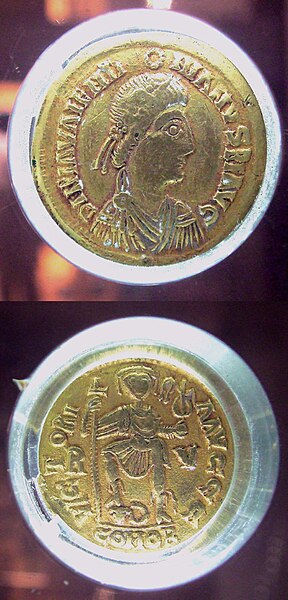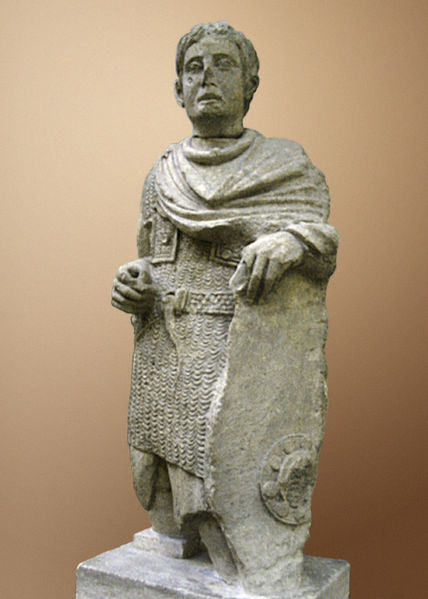Gaius Sollius Modestus Apollinaris Sidonius, better known as Sidonius Apollinaris, was a poet, diplomat, and bishop. Born into the Gallo-Roman aristocracy, he was son-in-law to Emperor Avitus and was appointed Urban prefect of Rome by Emperor Anthemius in 468. In 469 he was appointed Bishop of Clermont and he led the defence of the city from Euric, King of the Visigoths, from 473 to 475. He retained his position as bishop after the city's conquest, until his death in the 480s. He is venerated as a saint in the Catholic church, the Orthodox Church, and the True Orthodox Church, with his feast day on 21 August.
Sidonius Apollinaris
Lac d'Aydat, site of Sidonius' villa, Avitacum.
Solidus depicting Avitus (r. 455), father-in-law of Sidonius.
Solidus depicting Majorian (r. 457-461).
Gallo-Roman culture was a consequence of the Romanization of Gauls under the rule of the Roman Empire. It was characterized by the Gaulish adoption or adaptation of Roman culture, language, morals and way of life in a uniquely Gaulish context. The well-studied meld of cultures in Gaul gives historians a model against which to compare and contrast parallel developments of Romanization in other less-studied Roman provinces.
Wall fragment with fresco of a Gallo-Roman man, from Evreux, 250–275 AD
Gallo-Roman figures found in Ingelheim am Rhein
Northern Gaul "sou", 440–450, 4240mg. Hotel de la Monnaie.
A Gallic warrior dressed in Roman lorica hamata (chainmail) with a cloak over it. Wearing a torc around his neck, he also wields a Celtic-style shield although the proportions of the body and the overall realism are more in line with Classical and Roman art than with the Celtic depictions of soldiers.








